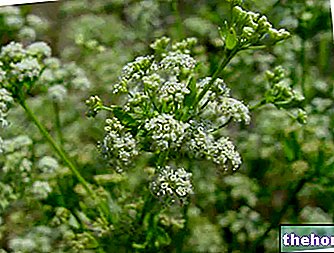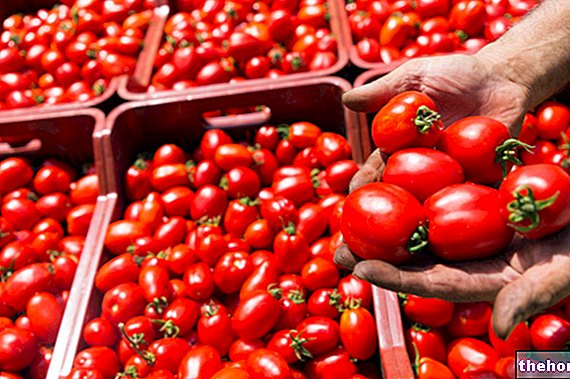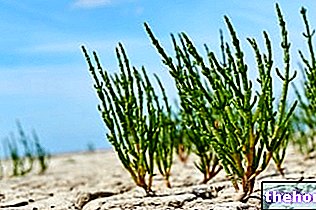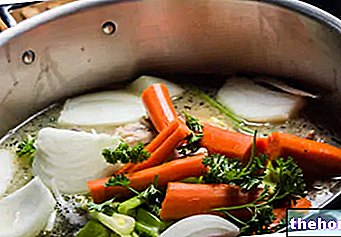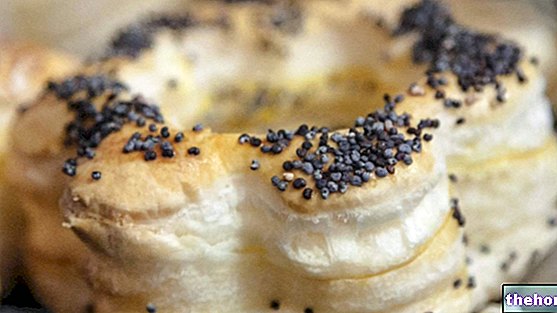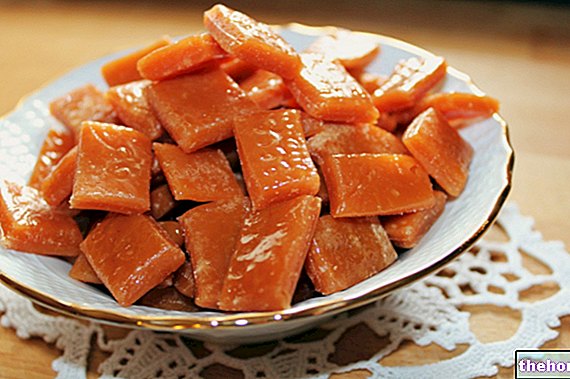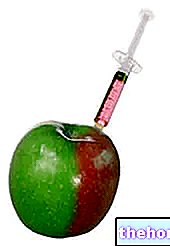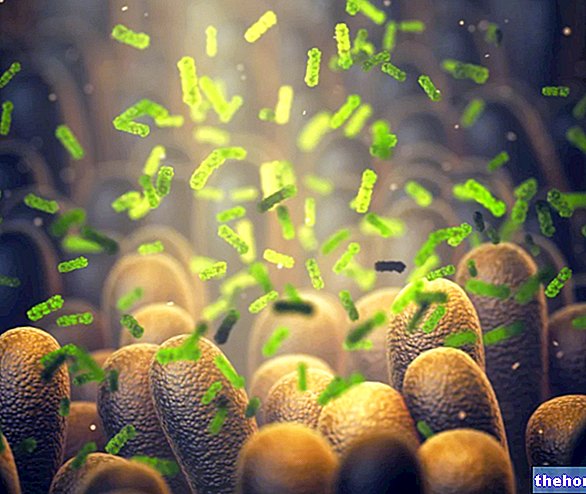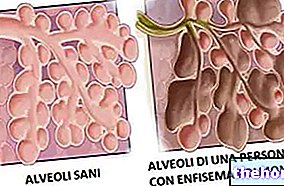Salad it is a term to which different meanings are attributed, mostly of a gastronomic nature. Probably, in common parlance "salad" means mainly a side dish based on raw leafy vegetables, but there is no shortage of salads used as an appetizer, first course, main course or single course.
The prerogative of the salad (as the Latin etymology of the term suggests - salada -) is to be seasoned;

Types of salad
The salad may include raw ingredients, cooked or both.
In the distinction of the countless dishes, the noun "salad" is often accompanied by the specific discriminant (constituted by the "main ingredient), which illustrates the composition of one or more preparations; some examples are:
green salad, lettuce salad, endive salad, rocket salad, soncino salad, chicory salad, coleslaw (all cabbage and broccoli), turnip salad, celery salad, sprout salad, radish salad, artichoke salad, raw red onion / spring onion salad, raw spinach salad, dandelion salad, radicchio salad, mixed salad, raw fennel salad, carrot salad, cucumber salad, raw tomato salad, raw zucchini salad , raw pepper salad, orange salad, grapefruit salad, apple salad, pear salad, melon salad, pasta salad, rice salad, barley salad, spelled salad, corn salad, potato salad , bean salad, broad bean salad, chickpea salad, lentil salad, pea salad, soy salad, fennel salad etc.
It is possible to make salads more complete and nutritious by increasing the number of ingredients; in this case, the specific discriminant is followed by additional ingredients, quantitatively less abundant. For example: "green salad with": olives, parsley, avocado, chillies, chicken, turkey, frankfurters, veal, tuna, mackerel, hard-boiled eggs, mozzarella, parmesan, cottage cheese, walnuts, pine nuts, almonds, hazelnuts, pistachios, sesame, coconut, etc. L" salad can consist of all 7 basic food groups.
NB. Some dishes, such as "l" seafood salad "or" l "chicken salad", contain mainly ingredients of animal origin.
"Famous" salads
On the national and international territory there are many typical preparations (even quite complex) that have become part of the local image; for what concerns Italy, we can mention: fennel and orange salad (Sicily), baked onion salad and soncino salad with eggs (Piedmont and Lombardy), bracing salad (Campania) etc.
As for international cuisine, everyone will have heard of: Russian salad (created by a French cook for a Russian Tsar), Greek salad (Greece), Caesar salad (USA), Montecarlo salad (Montecarlo), Nicoise salad (Nice ), Valencian salad (Spain), German salad (Germany) etc.
Caesar Salad a Modo Mio (Without Eggs)
Problems with playing the video? Reload the video from youtube.
- Go to the Video Page
- Go to the Video Recipes Section
- Watch the video on youtube
Nutritional reflections on salads
Who knows why, in the common imagination, salads and salads in general are synonymous with light, dietetic, low-calorie and healthy cuisine; probably, referring to a "green salad" dressed with a teaspoon of oil and lemon juice, the concept would not be so far from reality. However, analyzing the preparations mentioned above, it seems quite obvious that the only really "light" salads are those essentially consisting of side dishes based on leafy vegetables, or roots and fruits, which have nothing to do with salads made of cereals, legumes, meat, fish, eggs and cheeses. a quick glance at the ingredients of the famous "summer salads" is enough to realize that, probably, they bring MORE "CALORIES" than a simple plate of dry pasta with tomato (without considering that, in accompaniment to salads, a slice of bread does not take away anyone !)
In case the kind readers are still not convinced, below I will report some examples of really LIGHT salads and salads, with very few added fats (about 25-50% of the necessary) in comparison to the classic dish of dry pasta with tomato.
I think there is no need to add anything else; just think that any salad or a common rice salad, not "light", provide up to 25-35% of calories more than in the above examples (for a total of AT LEAST 540kcal in the first case and 500kcal in the second). In conclusion, it is better to pay attention to the composition of salads and salads to avoid that, in an attempt to reduce the energy intake, the opposite effect is not obtained.
Other Foods - Vegetables Garlic Agretti Asparagus Basil Beets Borage Broccoli Capers Artichokes Carrots Catalonia Brussels sprouts Cauliflower Cabbage and Savoy cabbage Red cabbage Cucumber Chicory Turnip greens Onion Sauerkraut Watercress Edamame Chives Chanterelles Flour Cassava Flowers Pumpkin Flour Edible Flowers Pumpkin Seasonal Fruits and Vegetables Endive Salads and Salads Strengthening Salad Lettuce Aubergines Vegetables Nettle Pak-Choi Parsnip Potatoes American Potato Peppers Pinzimonio Tomatoes Leeks Parsley Radicchio Turnips Red Turnips Radishes Rocket Shallots Endive Celery Celeriac Seeds Sprouted Spinach Truffle Valianamberi or Jerusalem artichoke laxatives Saffron Pumpkin Zucchini Vegetables - Nutritional properties OTHER VEGETABLE ITEMS Categories Food Alcoholics Meat Cereals and derivatives Sweeteners Sweets Offal Fruit Dried fruit Milk and derivatives Legumes Oils and fats Fish and fishery products Cold cuts S pezie Vegetables Health recipes Appetizers Bread, Pizza and Brioche First courses Second courses Vegetables and Salads Sweets and Desserts Ice creams and sorbets Syrups, liqueurs and grappa Basic preparations ---- In the kitchen with leftovers Carnival recipes Christmas recipes Light diet recipes Women's Day, Mum, Dad Recipes Functional Recipes International Recipes Easter Recipes Recipes for Celiacs Recipes for Diabetics Recipes for Holidays Recipes for Valentine's Day Recipes for Vegetarians Protein Recipes Regional Recipes Vegan Recipes

